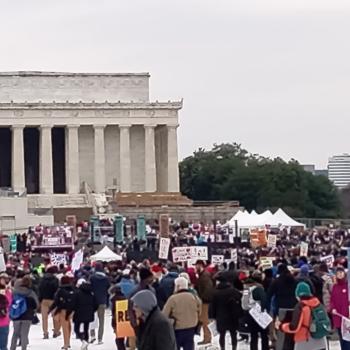Memorial Day weekend was spent at home this year. This allowed me to break sod and plant our garden. This is our first year doing a garden. As a child, I did a garden for 2 or 3 years. They were mostly modest successes. Having had an anti-vegetable streak, there was a tad bit of irony to the whole enterprise. The advantage of doing my own garden rather than managing one for my parents is that I got to choose the crops. Our garden will offer spinach, carrots, cucumbers, pumpkins, corn, and watermelon. We should be able to enjoy our first fruits, err vegetables, in July.
Given the most recent issue of Chronicles (June 2008), this topic seems particularly apt. Our highly distributed agriculture production and distribution industry offers many benefits. For example, in many places one is able to buy grapes year round. While there may be some dispute on precisely where to allocate the credit, I think one can say the ability of the most productive lands to service the world has had the effect of bringing more food to more people. However the nature of exogenous things is that they are necessarily not intrinsic. In particular with food this means the San Joaquin Valley is dependent upon export markets being available to consume its goods, and it means that Anytown, USA, is dependent upon the ability to import food. As a good economist might say, we have defined trade.
Trade is well and good, and I could hardly imagine a world without it. As has been true since the beginning of time however is that trade is dependent upon a commons. Any number of things can impede that commons. For example when Hurricane Katrina hit, the distribution point used for processing 1/3 of the oil in the U.S. was taken off line. More recently a number of Far Eastern nations have closed their rice export markets removing a commons enjoyed by rice producers and importing nations. While people can enjoy good debates on the ethics and prudence of voluntary measures regulating the commons, of more acute concern to me at least are the involuntary things that can restrict the commons.
Ms. Katherine Dalton’s article “Outgrowing Agriculture” in the aforementioned issue of Chronicles ponders a Knoxville, KY, area adapting to life without large import markets. I find this example interesting in particular because if one were trying to stack the deck, they could choose a place like Phoenix, AZ, or a place in the South where certain times of the year require the importation of milk.
The total population needing to be fed [in the 12 county greater Louisville area] needing to be fed is a little more than 1.2 million people. But these 12 counties only raise and sell enough beef to feed about 26 percent of those people per year – even though Kentucky is a state known for raising beef cattle. In chicken, we do about the same – 35 percent, a minimum estimate given the way chicken numbers are reported. For pork, we can only feed about 14 percent of the population per year. For eggs, we come very short, with enough to meet just three percent of the yearly allotment. We do better with milk, despite the decline in recent years in the number of dairy farms. The 12 counties produce enough to supply 42 percent of the metro area with milk to drink, or 32 percent with cheese, or 81 percent with butter – but only 15 percent with all three….
Not even in wheat is the area around Louisville self sufficient. Assuming all wheat grown is milled as whole wheat flour, with no loss (white flour loses 30 percent of the grain), the 12 counties raise enough wheat to supply just 30 percent of the population. Only in corn are we growing more than enough – though of course much of this grain goes to feed livestock and now to ethanol. The area’s 6.5 million bushels would yield a year’s supply of cornmeal for 21.5 million people. But if we convert some of that corn to corn oil, the number falls short. Our corn would yield a year’s supply of cornmeal for all 1.2 million people, but the leftover bushels would produce salad or cooking oil for fewer than a quarter of them. [Several parenthetical expressions omitted.]
One would think that a rural city such as Louisville would be in much better shape. Of course this survey was offered in the present and reflects present realities like the relative ease of importing food on average from 1500 miles away. Ms. Dalton limited her scope to an immediate concern, and hence she was proper in not assuming grand champion apple trees developing in 14 days or even a year. As she notes in her piece, large food importer Great Britain did adjust during World War II to produce more of its own food. That food needless to say was a diet none of us would desire. Additionally any society that saw the importation of SPAM as a blessing, must have faced incredible privation.
I don’t believe we are at a point where the price of gas will fundamentally altar how we eat. Canada and Europe have seen our price levels for gasoline for some time. I would anticipate expansions to our rail infrastructure, since trains are very fuel efficient on a tonnage basis. More fundamentally, we have the issue that settlement bears no relation to the ability to procure food locally. Of all market signals to be attuned, one would think that food would be at the top of the list. Given the growth of such places as Las Vegas, NV, and Phoenix, AZ, I think we can say on an empirical basis that many local and regional leaders haven’t given much thought to the issue. One can appreciate each of these locations taking advantage of the commons, but if everyone took a similar view, the commons would be insupportable for any of us.












